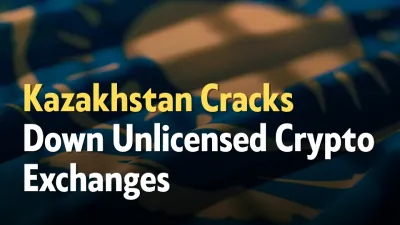Global Stablecoins Reshape Money Flow as Regulation Tightens
Abstract:Stablecoins expand beyond dollar pegs to euro, yuan, and algorithmic variants, with regulatory acts like GENIUS shaping a new era of digital liquidity.

In under a decade, stablecoins have evolved from niche experiments into a cornerstone of digital money. While the majority remain pegged to the U.S. dollar, the ecosystem now includes euro- and yuan-pegged tokens, as well as algorithmic and synthetic variants. This diversification could reinforce the dollars reach or usher in a more multipolar financial order.
A striking example of rapid change is USD1, a politically branded U.S. dollar stablecoin launched in 2025, which has quickly risen to become the fifth-largest stablecoin by market cap, reaching about $2.68 billion. Its ascent underscores that stablecoins are no longer crypto curiosities but significant instruments in the global monetary system.
Stablecoins are increasingly seen as the next phase of digital money. They merge fiat stability with blockchain efficiency. Dollar-backed tokens like USDT, USDC, and USD1 still dominate due to liquidity and integration, but regional diversification is accelerating. Euro- and yuan-pegged tokens, along with algorithmic and synthetic variants, are gaining traction in markets seeking local digital options.
In countries with volatile currencies, stablecoins provide price stability and access to global liquidity. Industry voices highlight the growing interconnectedness: every on-chain USD transaction tightens the worlds financial rails around the greenback, while also enabling new, internet-native pathways for money movement.
Regulators and industry players note a trend toward sovereign-backed or hybrid stablecoins that blend central-bank oversight with private innovation. Banks and payment providers are integrating stablecoins into regulated payment infrastructures, potentially moving them from the crypto niche to mainstream infrastructure as acquirers and gateways add euro and USD tokens.

The dollar remains the backbone of the global stablecoin market. Estimates show that over 95% of circulating stablecoins are pegged to the dollar, embedding USD rails across crypto, fintech, and cross-border settlement. Some observers describe this as “dominance with a new plumbing risk,” where stablecoins expand the dollars reach but introduce technical vulnerabilities if issuers must liquidate Treasuries quickly to meet redemptions.
Proponents argue that stablecoins actually amplify U.S. influence. They are not a threat to the dollar but rather the most powerful distribution channel it has ever had, moving through DeFi pools, remittance rails, gaming platforms, and cross-border commerce. The launch of USD1—backed by World Liberty Financial and endorsed by Donald Trump—has added a political dimension to digital dollars. If USD1 gains broader distribution, it could pressure incumbents on transparency and fees, signaling that stablecoins are moving from fringe finance into mainstream infrastructure.
The trajectory of U.S. digital money policy appears to favor stablecoins over a central bank digital currency (CBDC). With plans for a U.S. CBDC on pause, private, regulated alternatives fill the void, positioning stablecoins as the countrys chosen digital money standard.
Regulatory crossroads are defining the path forward. The GENIUS Act, enacted in July 2025, established a framework requiring 1:1 backing with cash or Treasury assets, mandatory audits, and federal oversight. This act has spurred international interest and inspired other jurisdictions to revisit their stablecoin rules. China has explored yuan-backed tokens to promote the renminbi‘s international use, while South Korea considers won-based tokens. Europe’s MiCA regime continues to pave the way for euro-denominated stablecoins, and Hong Kong is pursuing a dollar-backed issue with major financial partners.
Yet policy alone wont guarantee liquidity. For euro- and other currency-backed stablecoins to gain meaningful market share, banks must scale issuance and regulators must cultivate practical use cases across payments, trade, and remittances.
Looking ahead, observers say the outcome will hinge on how traditional financial institutions adopt stablecoins. If major payment processors and gateways begin supporting stablecoins at checkout or for B2B payouts, the technology will shift from niche to mainstream. Without such adoption, stablecoins risk remaining a crypto sidecar to traditional money.
Conclusion
The balance of global finance is turning toward digital liquidity rather than reserve currencies alone. If regulated stablecoins continue expanding under GENIUS Act-style frameworks and MiCA-like rules, they could form the backbone of the next generation of money—linking traditional finance with blockchain in a unified, programmable network. The key question remains: who programs money at scale, and will the rails stay unified or diverge into competing ecosystems?

Read more

Uniglobe Markets Review 2025: A Complete Guide to an Unregulated Broker
Uniglobe Markets claims to be an online trading company that offers many different types of investments, including foreign currency and raw materials. The company tries to attract traders by offering high leverage, different account options, and popular MetaTrader trading software. However, there is one major problem: the company does not have proper regulatory oversight. This creates serious concerns about the safety of clients’ capital and whether the company operates honestly. Read on to learn more about its regulatory status.

Russian crypto millionaire couple found dismembered and buried in Dubai desert
A gruesome case has emerged involving a Russian couple living in the United Arab Emirates who went missing in early October and whose remains were recently discovered in a desert near Dubai. Roman Novak, a self-styled cryptocurrency “millionaire”, and his wife Anna had last been seen travelling to a supposed investor meeting in the UAE, but according to investigators were instead abducted and murdered after a ransom plot failed.

UK Opens Crypto ETNs to Retail Investors
The UK's financial watchdog has lifted a 4-year ban, allowing retail investors to trade crypto exchange-traded notes (ETNs) on regulated exchanges.

Kazakhstan Cracks Down Unlicensed Crypto Exchanges
Kazakhstan intensifies its crypto regulation, shutting down over 130 illegal exchanges and seizing nearly $17M to combat money laundering and protect consumers.
WikiFX Broker
Latest News
Identity Theft in FX: FCA Flags New 'Clone' Broker Mimicking Fortrade
Oron Limited Regulation: A Complete 2025 Review of Its License and Safety
The Problem With GDP
Polymarket Launches First U.S. Mobile App After Securing CFTC Approval
Thailand Seizes $318 Million in Assets, Issues 42 Arrest Warrants in Major Scams Crackdown
RM460,000 Gone: TikTok Scam Wipes Out Ex-Accountant’s Savings
The "Balance Correction" Trap: Uncovering the Disappearing Funds at Vittaverse
Adam Capitals Review 2025: A Detailed Look at an Unregulated Broker
NordFX.com Review Reveals its Hidden Negative Side- Must-Read Before You Trade
Tauro Markets Review: Tons of Withdrawal Rejections & Trading Account Terminations
Rate Calc

